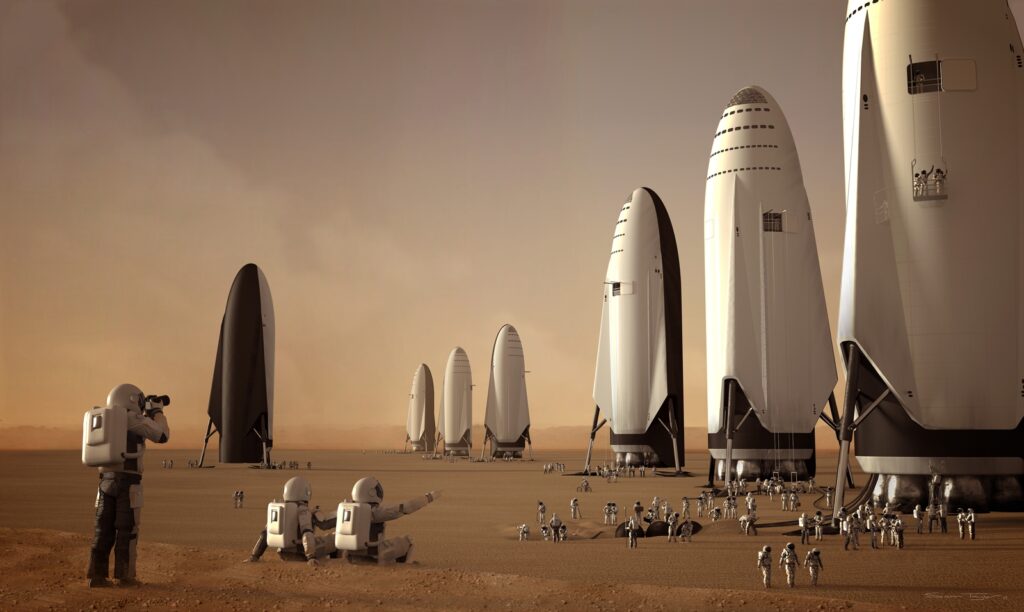A Vision as Big as a Planet
Elon Musk doesn’t just dream of Mars; he plans to make it a second home. His ambition to establish a self-sustaining colony on the Red Planet is both audacious and unnervingly detailed. SpaceX, his private aerospace company, is leading the charge with a strategy that seems to borrow equally from science fiction and Silicon Valley pragmatism.
While skeptics scoff at the timeline, Musk remains unfazed. “I think we’ve got a real shot at sending humans to Mars by 2029,” he declared at a recent SpaceX event. The goal? A fully operational city of a million people by the 2060s, one that doesn’t rely on Earth for survival.
A Colony in the Making: The SpaceX Mars Plan
Musk’s Mars colonization plan is built on several key components:

- Starship: The Interplanetary Workhorse
The fully reusable Starship, currently in development, will serve as the backbone of the mission. Designed to carry up to 100 people per trip, it aims to reduce the cost of interplanetary travel from hundreds of millions to a mere fraction. - Fueling the Journey
A crucial aspect of Musk’s vision is the ability to refuel Starships on Mars using locally sourced resources. The process, known as in-situ resource utilization, would convert Martian carbon dioxide and water ice into methane and oxygen—essentially creating a gas station 140 million miles away. - Terraforming: A Long-Term Bet
The final stage of Musk’s plan involves engineering Mars to support human life more easily. Although the notion of “nuking the poles” (one of Musk’s earlier suggestions) remains largely theoretical, advancements in climate engineering could make parts of Mars more habitable over centuries.
The Roadblocks Ahead
For all its promise, the Mars colonization plan faces daunting challenges. Radiation exposure, bone density loss due to lower gravity, and psychological stress from isolation are just a few of the risks.
Dr. Robert Zubrin, president of The Mars Society, acknowledges these hurdles but remains optimistic: “The risks are real, but so is human ingenuity. If we had waited for perfect conditions, we would never have left the caves.”
Funding is another issue. While SpaceX’s Starship program is partially financed through lucrative NASA contracts and private investments, a full-scale colony could cost trillions. Musk, however, insists that costs will drop as technology advances, much like how air travel evolved from a luxury to a common mode of transportation.
The Skeptics vs. The Believers
Critics argue that Musk’s vision is overly ambitious, perhaps even reckless. Astrobiologist Dr. Chris McKay warns, “The biggest mistake we can make is underestimating the complexity of sustaining human life off-world. Mars is not just another continent; it’s an entirely different world.”
Yet, Musk has a track record of making the impossible possible. SpaceX, once dismissed as a pipe dream, is now NASA’s go-to for crewed spaceflights. Tesla, which once struggled for survival, now dominates the electric vehicle industry.
What Comes Next?
Musk’s timeline remains aggressive. If all goes according to plan, the first cargo missions to Mars could launch within the decade, laying the groundwork for the first human settlers. These pioneers, likely a mix of engineers, scientists, and daredevils, will face one of the greatest challenges in human history.
Will Musk’s vision materialize? The answer, as with most things SpaceX, will likely be revealed not through words, but through rockets roaring toward the sky.






